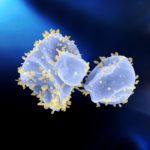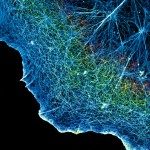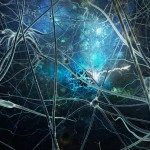Lien vers Pubmed [PMID] – 39699168
Lien DOI – 10.1128/mbio.00991-24
mBio 2025 Feb; 16(2): e0099124
Cell division is a fundamental process ensuring the perpetuation of all cellular life forms. Archaea of the order Sulfolobales divide using a simpler version of the eukaryotic endosomal sorting complexes required for transport (ESCRT) machinery, composed of three ESCRT-III homologs (ESCRT-III, -III-1, and -III-2), AAA+ ATPase Vps4 and an archaea-specific component CdvA. Here, we clarify how these components act sequentially to drive the division of the hyperthermophilic archaeon Saccharolobus islandicus. Our data suggest that ESCRT-III plays an active role during the early stage of membrane constriction during cytokinesis, whereas ESCRT-III-1 and ESCRT-III-2 are indispensable for the “pre-late” and “late” stages of cytokinesis, respectively. In the escrt-III-1 deletion strain, the division is blocked when the mid-cell constriction reaches ~30% of the initial cell diameter (“pre-late” stage), yielding “chain-like” cellular aggregates. Depletion of ESCRT-III-2 leads to the accumulation of cells connected through narrow membrane bridges (“late” stage), consistent with the key role of this protein in the final membrane abscission. We used 3D-single molecule localization microscopy to image ESCRT-III rings of different diameters and show that the decrease in the ESCRT-III ring diameter and membrane constriction are inconsistent with a mechanism exclusively based on spiraling of the ESCRT-III filaments. By contrast, the cone-shaped assemblies of ESCRT-III-1 and ESCRT-III-2 are consistent with spiral formation, highlighting the distinct roles of the three ESCRT-III proteins during the cytokinesis. We propose the “relay race” model, whereby the cytokinesis is achieved through a sequential and concerted action of different ESCRT machinery components.Two major cytokinesis mechanisms, rooted in contractile FtsZ and endosomal sorting complexes required for transport (ESCRT) rings, respectively, have emerged in the course of evolution. Whereas bacteria rely on the FtsZ-based mechanism, different lineages of archaea use either of the two systems, and eukaryotes have inherited the ESCRT-based cell division machinery from their archaeal ancestors. The mechanism of ESCRT-based cell division in archaea remains poorly understood and mechanistic studies on different archaeal model systems are essential to unravel the natural history of the ESCRT machinery. Here we investigate the interplay between three major ESCRT-III homologs during the division of a hyperthermophilic archaeon Saccharolobus islandicus and propose the “relay race” model of cytokinesis.








